Sharlyn J. Lauby's Blog, page 70
March 23, 2021
Managers: How to Build Positive Working Relationships with Remote New Hires
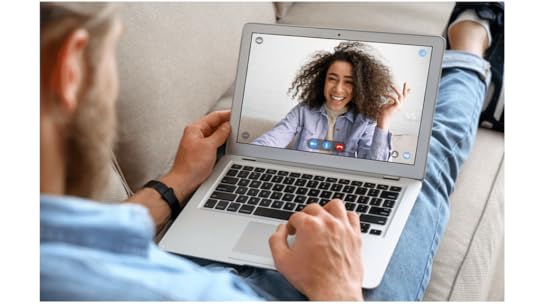
Estimated reading time: 5 minutes
(Editor’s Note: Today’s article is brought to you by our friends at Criteria, a leading provider of pre-employment testing services. To learn more about how pre-employment testing can benefit your talent acquisition strategy, check out Criteria’s “Definitive Guide to Pre-Employment Testing”. I’ve found it to be a comprehensive guide that I keep handy all the time. Enjoy!)
While I do most (if not all) of my work remotely, and I enjoy it, there is something wonderful about meeting in person the people I work with on a regular basis. So, I totally understand when individuals say that they miss the office. One of the best parts about being in the office is building relationships with the people we work with.
That raises the question: how do we build good relationships? Especially with new hires, who we’ve only spent a few hours with prior to their first day. Then of course, there are remote employees, who we don’t see all the time (if at all).
Regardless of your office environment, there are a few core principles to building good working relationships, especially with new hires. These six principles work even when new hires are working remotely.
Remember what it’s like to be a new employee. New hires do not know the company, policies, procedures, etc. This is amplified when the new hire works remotely, and they don’t have the benefit of asking someone in the office. HR departments should consider creating FAQs that provide answers to a new hire’s most common questions. Also, consider having a buddy program so new hires have more than one person they can turn to for answers.Be available. Managers have a full plate of responsibilities. Even when we’re all working in the office, new hire onboarding takes time. It’s possible that remote new hire onboarding takes extra time. Today’s technology can be a valuable tool. Managers can let new hires know that they’re going to check-in with them regularly. Not because they don’t trust them. Just because they want to make sure that everything is going okay. They can also let employees know that eventually you’ll back off. But until the new hire is settled in, let them know that you’re available.Learn their style (and let them know yours). New hires and managers are in the same position. They’ve only spent a few hours (max) with each other during the interview process and now they’re working together. They need to look for ways to share how they like to work. I still love this idea of creating a personal user manual.Set performance expectations. New hires are looking for some direction on how their work is supposed to be accomplished and how their performance will be evaluated. Managers should try to schedule a one-on-one meeting with new hires to review their job description and the company’s performance review process. Let them know how their work connects to the organization and the performance standards that will be used in their evaluation.Offer recognition and be consistent about it. After managers talk with new hires about performance expectations, it’s important to offer feedback about how they’re doing. Let employees know when they’re doing something right. Reinforce the good things. And correct them when something isn’t to the performance standard. If employees don’t hear anything, they will assume that what they’re doing is acceptable. You know, the whole “no news is good news” thing. And if by chance, the employee’s performance isn’t to standard, this becomes a difficult moment. Both in terms of building trust with the new employee as well as the new hire having to “unlearn” something. Managers do not want the reputation of only speaking to employees when something is wrong.Focus on trust and respect. It’s important not to confuse delivering corrective guidance with being mean. We all make mistakes. New hires will make mistakes. Deliver guidance on the best way to complete the task in a respectful manner. Organizations should provide managers with training on how to deliver feedback. This doesn’t have to be a long training session. Consider including a one-page job aid to help them guide the conversation.As someone who works remotely, I can tell you from personal experience that it is possible to build positive working relationships. But it takes work. No different than when we build relationships in person.

New hires deserve our attention. Building a working relationship helps them start their careers on a positive note and moves them towards success. It helps to create employee engagement and retention. But there’s one last thing. The work doesn’t stop after the new hire is settled into their role. Managers need to invest time and energy into managing their onsite/remote teams.
If you want to learn more about how to manage a remote team, join me and the Criteria team for a webinar on April 6 at 10a Pacific / 1p Eastern. You can register here. As always, if you have a conflict you can register anyway and watch the recorded version. See you there!
The post Managers: How to Build Positive Working Relationships with Remote New Hires appeared first on hr bartender.






March 21, 2021
Bookmark This! The Future Workplace Edition
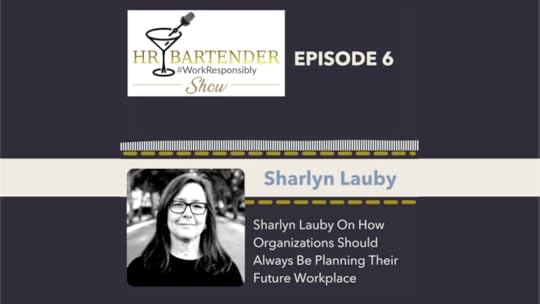
When we first started this podcast, we came up with the theme of “The Future Workplace”. We’re in the middle of a pandemic and it seemed to make sense to talk about the future and what the future might look like. I knew there were people I absolutely wanted to talk with. They’re smart and have a pulse on what’s happening in the HR and business world. What I didn’t realize was how integrated and aligned these conversations were.
To make this first season, the episodes weren’t recorded in the order they’re being presented. But what’s amazing to me is how they almost effortlessly build on one another to tell a story about the future workplace. In this wrap-up episode for season one, I take a moment to pull all the takeaways together.

If you haven’t listened to the previous episodes, here they are for easy listening:
Jim Stroud Talks About the Tools that Recruiters Need to Drive Business Success Chris Mullen Shares Why Employees are not Going to Work for Companies with Outdated Technology Alexandra Levit Explains Why Career Durability is the Future of Talent Management Hannah Morgan Shares How to Manage Your Career During Any Next Normal Jarrod Harden Says Listening is the Key to Creating Workplace Inclusion and BelongingWe’ve been talking about a podcast for a very long time. It’s great to see it come to life. And we’ve learned some things along the way. Yes, about producing a show. But more importantly, we learned from our guests. When we bring people together and let them be themselves – let them share their knowledge, great things can happen. I think that’s what the future workplace is all about.
Episode 6 – Sharlyn Lauby Future Workplace Show Notes
Episode 6 – Sharlyn Lauby Future Workplace Transcript
Thanks for listening to our podcast. This season of the HR Bartender show is brought to you by our friends at Ultimate Kronos Group (UKG), a leading global provider of human capital management, payroll, HR service delivery, and workforce management solutions.
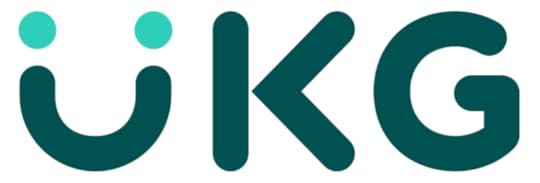
You can subscribe to the HR Bartender show on Apple Podcasts, Spotify, Google Podcasts, Stitcher, and TuneIn. And we would absolutely love it if you would leave a review.
If you enjoyed this episode, be sure to check out other episodes on our podcast page.
The post Bookmark This! The Future Workplace Edition appeared first on hr bartender.






March 18, 2021
Learn How to Learn – Part 5, Self Management Series
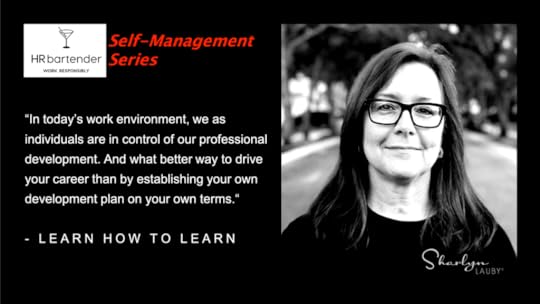
Estimated reading time: 4 minutes
Whether you work in an office or remotely, self management involves doing a lot of things independently such as resolving your conflicts, figuring out the solutions to your problems, and creating your most productive work. It also involves thinking about your future and generating your own professional development plan.
Sometimes our boss will tell us what skills to develop. In an environment of self management, the boss might – scratch that – they will rely on us for input. That’s where knowing yourself (see Part 1) comes into play. You want to be confident in the things you do well and cite specific examples of when you’ve used those skills.
Also, we should be prepared to discuss what skills we’d like to develop. It might be something that will help you do your work easier, better, or faster. For example, now that you’re working remotely, it might be helpful to learn a new software program. Or it could also be a skill you would like to acquire for the future.
Once you and your manager agree on that skill or quality you want to develop, think about how you want to go about learning it. We all have preferred methods of learning. Ever heard someone come back from a workshop only to say, “What a waste! I could have learned everything I needed to know by reading the book.” This is why understanding how you like to learn will be very valuable.
This is so important right now for self management when we’re not gathering in large groups. In the past, we might have said, I’d like to attend this conference or workshop. We might need to consider trying new forms of learning.
Audio learners like to learn by listening. This could be at an online lecture or podcast.
Visual learners want to see to gain understanding. Charts, graphs, diagrams, pictures, videos are all visual learning mediums. Visual learners might also like to learn via books.
Kinesthetic learners prefer to have a hands-on learning experience. They enjoy the opportunity to practice the activity, conduct an experiment, or maybe even role play.
No style of learning is better or worse. It’s understanding the best style for you that makes the difference. For instance, if you’re a visual learner then the last thing that might interest you is attending a lecture. And, if you did attend the lecture, you might not learn anything.
You might also find that you gravitate toward different learning styles in self management depending upon the subject. An example might be learning how to create a spreadsheet pivot table (by actually doing it, which is kinesthetic) versus learning the history of blogging via a lecture.
Being in tune not only with the subjects you want to learn but your preferred learning style creates greater opportunities for you. It allows you to allocate your resources (time, money, etc.) toward those experiences that will help you learn the most.
The second part of self-managed learning is being able to curate credible information. Emphasis here is on the credible part. First, it’s finding what you need at the moment you need it. For example, while we’ve been spending more time at home, we decided to make sourdough starter. I had no idea how to do it. So I went online and found videos to help me. And, it worked! That’s the key – the video was accurate and easy to follow.
In today’s work environment, it’s important to understand that we as individuals are in control of our professional development. And what better way to drive your career than by establishing your own development plan and on your own terms. The only way we can do that is by understanding how we like to learn and the best way to learn the information.
Our last self management competency touches all of the previous ones. Yes, you got it. It’s focused on change.
The post Learn How to Learn – Part 5, Self Management Series appeared first on hr bartender.






March 16, 2021
Workhuman Certified: How to Turn Your Words Into Action
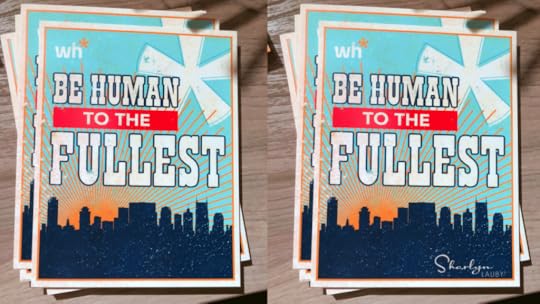
(Editor’s Note: Today’s article is brought to you by our friends at Workhuman® [formerly known as Globoforce]. They help organizations energize their cultures and unlock employees’ passion and potential with the fastest-growing social recognition and continuous performance management platform. Enjoy the article!)
A few months ago, I shared with you an article about “4 Workplace Guarantees Every Employee Should Have.” The article is focused on the Workhuman Charter of Workplace Rights, which comes from the book, “Making Work Human: How Human-Centered Companies are Changing the Future of Work and the World,” by Eric Mosely and Derek Irvine.
The workplace guarantees that I mention in my article (i.e., the Charter of Workplace Rights) are principles that every employee should be able to rely on. It doesn’t matter what the employee’s job title is, or what size company they work for, or where the business is located, or even what industry it’s in. Consider it the baseline for the employee experience. Just as a reminder, the Charter outlines a place where:
Environmental, social, and economic sustainability is supported.People feel secure expressing their views and ideas, with respect for themselves and others.Individuals can use their talents and voice for good.Employees deserve to grow to their greatest potential through training, feedback, and rewards.But as we all know, it’s one thing to say that the organization believes in these principles and another to show it. For example, in my professional experience, I’ve worked with managers who told me that work-life balance was important, but they never showed it in their actions or worked to make it a reality for me. Their words and their actions didn’t match.
Workhuman understands that too. That’s why they created Workhuman® Certified. It’s a program for organizations and individuals to adopt the best practices outlined in the Workhuman Charter of Workplace Rights. There are two paths in the certified program: one for organizations and the other for individuals.
The Workhuman Certified Enterprise program walks organizations through the process of identifying the actions they will take to support each workplace pillar and document their accomplishments. Earning the certification is FREE and certified companies can promote their accomplishments as part of their internal and external branding efforts. They also have access to a community of other certified companies to connect and learn from.
The Workhuman Certified Professional program is a FREE, self-paced learning experience focused on supporting and implementing the principles outlined in the Charter of Workplace Rights. Individuals can complete the curriculum to earn their certification. Then like the Enterprise program, certified professionals can connect and learn from others in the community.
I can definitely see the value in both programs. I can also understand how some human resources professionals might want to test drive the individual program before developing a business case to pursue the Workhuman Certified Enterprise program. Personally, I’ve earned my Workhuman Certified Professional designation and found the program to be both engaging and thorough. The learning modality is a combination of listening and reading. At the end of each module is a self-assessment exercise, which can be printed for reflection and refresher. I would envision using the assessments as the foundation for the Enterprise business case.
As organizations start to focus on their economic future and what a “next normal” looks like, this could be a perfect time to look at organizational culture and the employee experience. And now that you know about these programs, I would encourage organizations and individuals to view the Workhuman Certified designation as more than a badge to be obtained.
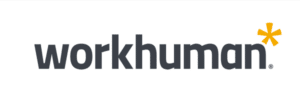
Yes, obtaining a certification is worthy of celebration. However, as the old adage says – the journey is the destination. The Workhuman Certified designation is about turning words into action. It’s about saying to employees, “We believe you deserve everything that this Charter stands for and we’re going to show you.”
There’s one last thing that I want to mention about the Workhuman Certified programs. That’s the part about them being free. There are plenty of organizational awards and recognition programs. Many of them charge fees to participate. And that’s fine. I’m not here to trash talk those programs. If you know Workhuman, then you know they’ve always been an organization that puts humans first. When the pandemic started making global headlines, the first thing they did was offer some of their products for free. To me, that’s a clear indicator of putting words into action. There’s tremendous value in learning how to create a great employee experience from a company that lives it every day.
During a period in time when organizational resources might be limited, this is a great way to put something meaningful in place for your employees. And by taking action, you’re benefitting both your workplace and your bottom-line. To learn more about Workhuman Certified Enterprise and Workhuman Certified Professional programs, visit their website.
The post Workhuman Certified: How to Turn Your Words Into Action appeared first on hr bartender.






March 14, 2021
Can Organizations Run a COVID Vaccine Program
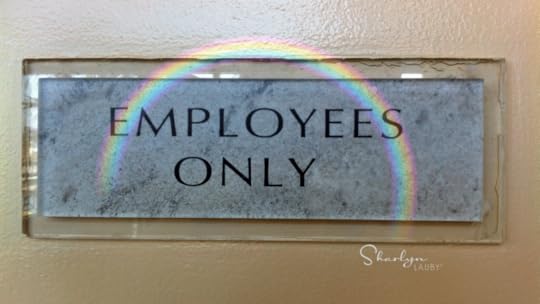
Estimated reading time: 12 minutes
The news about COVID vaccines is very positive and encouraging. If you’ve already received your vaccine or have an appointment to do so, good for you! If you’re still patiently waiting, stay patient! COVID remains a very serious virus and we need to continue to take precautions.
With eligibility requirements expanding, organizations need to start thinking about how the vaccine rollout impacts their operations. Organizations are going to want to think both short- and longer-term about their communications to employees where the vaccine is concerned.
To help us understand some of the business decisions that we need to consider, I’ve asked back my friend Carrie Cherveny to offer her insights. Carrie is senior vice president of strategic client solutions in HUB International’s risk services division. In her role, Carrie works with clients to develop strategies that ensure compliance and risk mitigation when it comes to insurances such as health and welfare programs and employment practices liability.
Carrie has helped us throughout the pandemic to understand the matters that organizations need to consider. I love her insights on this article whether companies can mandate that employees return to the workplace during the pandemic. Please don’t forget that Carrie is a lawyer, and her comments shouldn’t be construed as legal advice or as pertaining to any specific factual situations. If you have detailed COVID questions, they should be addressed directly with your friendly neighborhood labor and employment attorney.
Carrie, should organizations implement a COVID vaccine program? And if so, how is an employer program different from what’s happening through government and public health agencies?
[Cherveny] Employers will have to decide if they want to mandate, motivate, or educate employees when it comes to the vaccine. The employer’s approach is contingent on a number of factors such as culture, industry, job-functions, budget, and HR/compliance resources. Other considerations may include:
Who? Would some or all of the workforce be included in the policy?What? Would your policy be uniform or would different positions have different rules? For example, all customer-contact positions may be required to receive the vaccine but all ‘back of the house’ positions may elect to receive the vaccine.Risk Analysis: What are the risks in your business or industry of not vaccinating your workforce, compared to the risks of mandating the vaccine?Enforcement: Is your organization prepared to turn away candidates who are not willing to be vaccinated, and terminate employees who do not have a legal exception to the vaccine?Culture: The vaccine can evoke a variety of responses and reactions – is your organization prepared to respond to your employees’ fear, uncertainty, and doubt?Compliance: Do you have the subject matter experts to address the vaccine compliance considerations? A mandatory and/or vaccine incentive program requires internal HR to address the compliance considerations such as the Americans with Disabilities Act (ADA), Title VII of the Civil Rights Act, and the Genetic Information Nondiscrimination Act (GINA) to ensure that the program comports with these legal requirements.An employer’s program is different from state programs because the state is actually delivering the vaccine. Instead, the employer operates much like as a source of information and (potentially) motivation.
If organizations decide to implement a COVID vaccine program, what should be the program’s purpose? Meaning, do organizations have direct access to provide vaccines?
[Cherveny] Currently, only those organizations that are authorized to dispense the vaccine are able to directly provide the vaccine to its employees. For the most part, vendors are reporting to HUB that they are not yet able to come on-site to deliver vaccines to employees for at least two reasons:
First, vaccine eligibility remains limited. States continue to roll-out eligibility criteria. Refer to this “How Do I Get a Vaccine?” portion of this Centers for Disease Control (CDC) page for more information. But no state has opened the vaccine to everyone. There continue to be limitations such as those over a certain age or in specific industries/professions. Second, there is not yet enough vaccine inventory to deliver the vaccine on a wide-spread basis. In fact, many vendors have told us here at HUB International that they don’t expect to be able to deliver on-site vaccines to employers until next year. Some vendors have stated that they may be able to deliver vaccines on-site later this year but will only do so for single-site employers with 1000+ employees in one location.All organizational COVID vaccine programs need to have some sort of communications plan. What are 2-3 things that employers will want to communicate?

[Cherveny] Any communication plan should begin with a cross-functional internal task force that includes all levels of employees from various organizational departments. Included on the task force may be someone who leads the effort to implement the company’s vaccine education and engagement plan. A communication plan should also include:
Diversity and Inclusion: Be sure your task force and communication plan includes input from a diverse group of employees with a variety of job functions, backgrounds, gender, races, religions, socio-economic, and geographic footprints. It’s also a good idea to consider a diverse communication approach. Using a multi-media approach will be more likely to speak to a wider audience. Consider, for example, social media, recorded videos, posters, table-tents (for breakrooms and other public areas), blogs, newsletters, email, and live ‘town-hall’ forms of communication. Be sure you also have opportunities for Q&A.
External Resources and Experts: Employers may include messaging from both internal and external leaders. For example, the committee may seek messaging from local community organizations, healthcare providers, religious leaders, and internal leadership/influencers. Moreover, employers may also hold events and invite them to speak to the employees. Additionally, local and state department of health often offer local representatives who may provide messaging and may even speak with employees.
Ongoing Preventive Requirements: All employee communications should reinforce your COVID safety policies and protocols. Employees must be reminded that regardless of their vaccination status, they must continue the employer’s safety rules such as wearing masks, hand-washing, and social distancing.
Be a Trusted Resource: In many cases, employers will have the opportunity to be a trusted source of information. Providing information and fact sheets from the CDC, the U.S. Food and Drug Administration (FDA), community public health experts, and leaders may help your employees, workers, customers, and other stakeholders make the best decisions for themselves and their families. Employers will have a unique opportunity to be a source of fact-based trusted information about the safety and efficacy of available vaccines.
We all know there are individuals who cannot or will not take the COVID vaccine. How should organizations prepare for those situations?
[Cherveny] Initially, employers should distinguish between: (1) employees that specifically cannot receive the vaccine (for a legally protected reason); and (2) those who choose not to receive the vaccine.
The lines of communication between the employer and employee are very important. The employer must be sure that it develops a written policy that includes avenues for employees to seek an accommodation on the basis of their religion under Title VII of the Civil Rights Act and/or health condition under the ADA. The Equal Employment Opportunity Commission (EEOC) has provided .
Under Title VII and the ADA, the employer must establish a process to ensure that the employer and employee engage in a cooperative effort to address any conflict between the employee’s health condition and/or religious belief or practice and the employee’s ability to receive the vaccine. However, there are ‘no magic words’. To request an accommodation, an employee may use ‘plain language’ and need not mention any particular terms such as ‘disability’, ‘Title VII’, or ‘religious accommodation’. The applicant or employee must provide enough information to make the employer aware that there exists a conflict between the individual’s religious practice or belief and a requirement for applying for or performing the job.
Both the ADA and Title VII allow the employer to request supporting documentation but each under somewhat different circumstances.
ADA Document Requests: Because the ADA limits the employer’s ability to seek employee medical information, employers must be sure they have an ADA compliant medical information request form. The employer may require the employee to have his/her health care provider complete this form as part of the interactive process. Title VII Document Requests: When the employer does not have enough information or a bona-fide doubt regarding the sincerity of the religious belief, it may ask about the facts and circumstances of the employee’s claim that the belief or practice at issue is religious, sincerely held, and it gives rise to the need for the accommodation. However, employers should remember that the EEOC instructs that Title VII defines ‘religion’ very broadly. It includes traditional, organized religions such as Christianity, Judaism, Islam, Hinduism, and Buddhism. It likewise includes religious beliefs that are new, uncommon, not part of a formal church or sect, or only held by a small number of people.Finally, employers should keep in mind that employees do not have the right to the accommodation of their choice. The employer is obligated to provide a ‘reasonable accommodation’, one that ‘reasonably’ accommodates the employee’s disability or religion, and that does not impose an ‘undue hardship’ on an employer. However, the employer is not required to provide the employee’s requested or preferred accommodation.
Employers should also check their state and local laws regarding vaccine programs, mandatory programs, and employee exceptions. Local counsel will be a very important resource and partner in any employer vaccine program.
Other vaccine objections include employees who object to receiving the vaccine on a basis that is not protected by any local, state, or federal law but they do so at their own risk. Employers do not have an obligation to accommodate or protect employees who choose not to receive the vaccine on the basis of their own personal beliefs.
However, employers should proceed with some caution. Currently, the only vaccines available are under an EUA (Emergency Use Authorization) and do not have full FDA approval. With respect to EUA-vaccines, the FDA has a regulatory obligation to ensure that potential recipients of such vaccines are informed of the known benefits and risks and have the option to accept or refuse it for any reason. As long as the EUAs are in effect, this right to refuse directly may conflict with an employer-mandated program and exposes the employer to more legal uncertainty and risk. Never before has an employer vaccine program been established on the basis of an EUA vaccine and we do not know if the EUA status will alter the years of established legal precedent regarding an employer’s right to implement a vaccine program.
Last question. I’ve seen articles about organizations paying bonuses or providing paid time for employees to get the COVID vaccine. We know you can’t dispense legal advice, but what should organizations be thinking about as they put these types of programs in place?
[Cherveny] There are a number of considerations and even more uncertainties with respect to vaccine incentives. Individual financial incentives may have little to no bearing on whether a person decides to take the vaccine. If they are fearful or have strong feelings against taking it, a gift card or premium credit/surcharge is not likely to incentivize them to change their mind on something they feel strongly against for their own personal reasons. In turn, those who are ready to get the vaccine will get it with or without incentives. In that case, the financial incentives the employer pays out may be money wasted because the financial incentive was never needed to persuade that population.
There are also compliance considerations with respect to a vaccine incentive program. An incentive or surcharge program tied to the health plan will implicate the EEOC, ADA, the Heath Insurance Portability and Accountability Act (HIPAA), and GINA rules for employer wellness programs. In that case, any offer of a financial reward in exchange for taking the vaccine will trigger GINA, HIPAA, and ADA compliance regulations for wellness programs tied to the group health plan (i.e. gift cards, cash rewards, etc.). Likewise, an incentive or surcharge program not tied to the health plan will likely still trigger ADA compliance.
Employers should proceed with caution regarding the thresholds for the financial award amount, since we do not have published rules (or any guidance) from the EEOC under the ADA. We do know that under the previous proposed wellness rules, the EEOC approved of de minimus rewards such as water bottles or key chains. In early February 2021, over 40 organizations signed on to a letter from the U.S. Chamber of Commerce to the EEOC requesting guidance from the EEOC regarding incentives. The EEOC has not yet responded.
Anecdotally, some of the more common incentives offered by employers include:
Providing paid time off to get vaccinated. Consider providing employees/workers a set number of paid hours for each dose of a vaccine they receive (for those that require two doses) as well as potential recovery and travel time. Providing a small bonus, prize, or other financial incentive (i.e., gift cards, coupons, etc.) to employees/workers who get vaccinated.Covering the cost. While COVID-19 vaccines purchased by the government are available at no cost, some providers may charge an administration fee. Also consider covering out-of-pocket costs (such as transportation and daycare) for employees/workers who get vaccinated.Another way to approach incentives may be to develop a group or department program. Group/department incentives and contests are a way an employer might create excitement and motivate interest in a vaccination effort. For instance, if a department reaches 90% vaccination rate, everyone in the department will enjoy a catered lunch, or a group reward of some sort. Generally, a group contest or incentive may not trigger regulatory obligations so long as the employer does not engage in employee medical inquiries.
I want to extend a HUGE thanks to Carrie for taking the time to share her knowledge and experience with us. COVID is a challenge and will continue to be as we move into the vaccine stage – and even beyond. Don’t forget that HUB International is maintaining a COVID FAQ. This is a 200+ question FAQ updated each week to consolidate the ever-changing and updated regulatory information across all aspects of employment including benefits, health and safety, and employee relations.
We’ve been dealing with COVID for over a year and we’re not done yet. I totally agree with Carrie’s comments that the vaccine rollout is an opportunity for organizations to show that they care. It’s an opportunity for organizations to show that the employee works for a caring culture and put together a plan that aligns with it.
The post Can Organizations Run a COVID Vaccine Program appeared first on hr bartender.






March 11, 2021
5 Types of Management Training to Better Manage a Remote Workforce
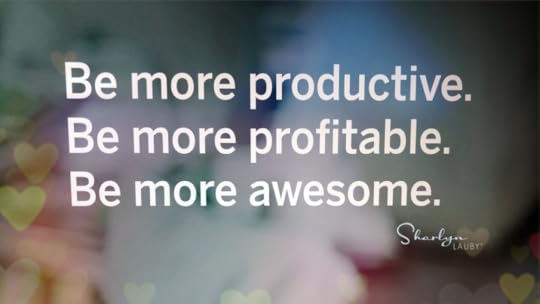
Estimated reading time: 3 minutes
I ran across an article recently on the Society for Human Resource Management (SHRM) website listing “10 Tips for Successfully Managing Remote Workers”. It’s a good read and worth checking out.
As we continue to have a large number of employees working remotely, I do think that organizations have to think about how to incorporate tips like the ones in the SHRM article into management and leadership development training. Take it from a list to something more educational and actionable. Then use the list as a job aid or reminder.
Here are five types of training that your organization might already conduct. It could make sense to review the training content and confirm that it includes information about managing remote employees.
PERFORMANCE. Performance management training should include a conversation about setting expectations and goals with remote employees. What is key in this content is making sure goals are set in a way that employees are held accountable for results. Meaning the employee has to produce an outcome to show they’ve met the goal. This will hopefully keep managers from falling into micromanaging habits.MEETINGS. I know of many organizations that do a short “meeting about meetings”. The intent is to keep the elements for meeting success top of mind. If you haven’t done a review of your meetings lately, it wouldn’t hurt to get it on the schedule. Do a review of business meeting basics and how those can be adapted to accommodate a remote environment.TIME MANAGEMENT. When we’re talking about managing a remote workforce, one of the tips that shows up regularly is teaching managers how to manage people they don’t see every day. Something that could help them do this is getting better at organization and time management. We’ve encouraged managers to manage by walking around. Now they may need to manage by writing things down.COMMUNICATION. Communication is always a hot topic but now, with a remote workforce, maybe it makes some sense to talk about written communications. Everything cannot be a conversation. And add to the training some reminders about active listening! With remote work, we don’t get to simply walk around the corner and ask someone to repeat themselves. Lastly, we need to help managers figure out how to find time to just connect with the team.RECOGNITION. This last training area is one I’m not sure how much we do in the first place. It’s about recognition and celebration. I know some management and leadership programs talk about recognizing people in a way that is meaningful to them. But I also know that sometimes we take the easy way out and order pizza for the team as a way to say thanks. With a remote workforce, we need to be more creative.During this time, organizations should still be conducting training. Managers need training more than ever to help them keep employees engaged and productive. It would not take a lot of resources to review existing training content, make sure it addresses the needs of remote workers, and offer some opportunities for discussion.
While the COVID-19 vaccine news is very positive and encouraging, the people I’m chatting with say that remote work is going to be around for a while. It only makes sense to put the pieces in place to manage it well.
Image captured by Sharlyn Lauby while exploring the streets of London, England
The post 5 Types of Management Training to Better Manage a Remote Workforce appeared first on hr bartender.






March 9, 2021
Career Development: Use a 360 Review WITH a Performance Appraisal

(Editor’s Note: Today’s article is sponsored by our friends at Primalogik, a cloud-based performance management solution that provides a flexible way to manage employee reviews, 360-degree feedback, goals, and engagement surveys. Enjoy the read!)
One of the talent challenges that I’m seeing right now is that organizations haven’t thought about how they will be conducting performance reviews with a remote workforce. We all know that employees need feedback about their performance and there are many ways to do it – performance reviews, one-on-one meetings, rewards, recognition, and 360 reviews.
In thinking about employee performance and feedback, organizations often immediately see the connection between performance reviews, one-on-one meetings, rewards, and recognition. But they don’t often see the connection between performance reviews and 360 reviews. There’s a great synergy between the two that shouldn’t be overlooked.
Before we talk about the synergy between these two activities, let’s do a quick refresher on each and their intended purpose.
The performance appraisal is a process between an employee and their manager. It typically covers the employee’s performance and results over a specific time period. It ideally includes goal setting, usually related to the employee’s role. And the results of a performance review might be linked to compensation and promotional opportunities.
The 360 review is a process between the employee, their manager, co-workers, and sometimes other colleagues or customers. It typically covers the employee’s performance and behaviors over a specific time period. The results are typically aggregated and anonymous, to reduce bias. And the results of a 360 review are linked to training, development, and learning activities.
Use Performance Review and 360 Review TogetherAs you can see these two processes are very different. That’s a good thing. Because we can use them together as a career development tool. There’s a difference between what gets done and how it gets done. A performance review talks about what the employee accomplished. A 360 review shares how the employee accomplishes their goals.
Yes, I know what you’re thinking and it’s true. The manager does have some sense of how employees accomplish their goals. However, in my experience, I’ve worked with more than one manager who was focused more on the results than the methods. I’ve had to deal with the challenges of the high performing employee who is not a good collaborator. I’ve seen situations where the employee’s performance review is glowing, but they get regular complaints from co-workers. The question becomes would a 360 review say the same thing as a performance review?
Talent development should be an essential part of the performance management process. I’ve always said that one of the worst things an organization can do is hire and/or promote someone based on their technical ability and never give them the power skills (aka soft skills) to be successful. A growing number of organizations realize this too and the future of talent in their company rests on developing future managers and leaders.
Make no mistake, those individuals still need to be able to do the work. They get that feedback about their technical ability in their performance appraisal. They also need to get training and development on how to be a good manager and leader. This is where a 360 review can be valuable. The results of the 360 review can create a learning and development road map.

If your organization is already doing 360 reviews, that’s great! Please don’t forget about the performance appraisal. Employees are getting a lot of information in the 360 review. Organizations should make sure they are receiving feedback about the technical aspects of their role and getting the opportunity to set goals in this area. How the work gets done is important. It’s essential. But employees do need to get the work done.
Performance Behaviors and Results are Equally ImportantEmployees need and want feedback about their work. Especially when they work remotely. Employees want to know that they’re not forgotten, and the company sees their hard work. Performance reviews and 360 reviews can work together to tell employees that their results and the methods they use to achieve those results are appropriate and on target. It helps employees stay engaged with the organization and encourages them to work harder.
If you want to learn more about how to use performance reviews and 360 reviews together in your performance management system, join me and the Primalogik team for a webinar on Wednesday, March 24, 2021 at 2p Eastern for a discussion on “Performance Management: Using 360 Reviews for Better Results”. And if you’re already committed during that time, just sign up anyway and get the recording. I promise it will be worth your time.
The post Career Development: Use a 360 Review WITH a Performance Appraisal appeared first on hr bartender.






March 7, 2021
Digital Transformation Can Help Manage Any Workforce Approach

(Editor’s note: Today’s post is brought to you by our friends at Paycom , a leading provider of cloud-based human capital management software. They were ranked third on the inaugural of organizations with over 2,500 employees. Congratulations! Hope you enjoy the article.)
We’ve talked before about how digital transformation can improve manager effectiveness and the employee experience. But things are a little different right now. Many organizations are planning their workforce strategies around multiple approaches. It could be fully on-site, fully remote or a hybrid model, with both on-site and remote employees. Does digital transformation still apply in all three of these workforce models? Absolutely!
In fact, according to a study from McKinsey & Company, over the past year, we’ve seen an acceleration of digital or digitally enabled products by a factor of seven years. Let that sink in for a moment. If we’ve seen seven years of technology progress within the last 12 months, then there are probably several coinciding business challenges that need to be addressed. Organizations will want to make digital transformation a priority.
4 Key Components for Successful Digital TransformationI realize in saying that organizations should make digital transformation a priority, that’s a big, broad statement. So let’s break it down into a few manageable areas, starting with a definition. Digital transformation is focused on using technology to solve business problems. We can further break it down into four key components.
Build a technology infrastructure. Anecdotally, I’ve heard from many senior leaders that they thought they were far ahead of the technology curve, and last year made them realize that they’re not. This directly ties into the McKinsey statistic above. For digital transformation to be successful, organizations need to invest in the right technology. At a minimum, it should be mobile friendly, update information in real time and keep data secure.
Give employees access to their information. Regardless of whether your organization operates with a fully on-site, fully remote or hybrid workforce, organizations have to think about the most effective and efficient ways to ensure the accuracy of employee data like contact information and benefits enrollments. One of the easiest ways organizations can do that is by letting employees manage and update their own data, which most employees already do in their personal lives. And it saves money. According to a report from EY, every time an HR professional manually enters employee information, that transaction costs an organization $4.51.
Allow HR-related information to be accessible and searchable. Instead of making employees ask for information related to benefits and company policies, let them easily access it on their devices. This allows employees to get the information they need at the time they want it, which is great for the employee experience. According to a survey conducted by OnePoll for Paycom, employees who are working remotely say that receiving approvals from their manager is their second highest frustration, right behind too many logins. Giving employees access to information allows managers and HR to focus their time on less administrative (and more “human”) activities like building positive work relationships and performance coaching.
Train employees on the concept of self-management. This includes managers! On the surface, this one might not sound like it’s very technology focused. But with digital transformation comes personal accountability for both employees and managers. Give employees the tools to work on their own, and give managers the ability to evaluate performance based on results. Digital transformation isn’t only about giving employees hardware; it’s about creating the right environment to thrive with the technology.

I will admit there’s more to digital transformation than these four things. But this is a good start. These four components can help organizations shift their focus from administration to action, which applies no matter what workforce approach the organization is planning.
Digital Transformation Is Focused on Taking ActionI could be very wrong, but my prediction for 2021 is that organizations are laser-focused on taking action. And they want employees to be focused on the same — specifically, delivering bottom-line results. That starts at the very beginning of the employee life cycle with onboarding.
If you think about the four components we’ve outlined here, setting employees up for success on day one is key. But given the events of the past year, we have to think of day one a little differently. We’re not only referring to employees who are new to the organization, but employees who have been working remotely for the past year (or longer!) and are thinking about transitioning back into the office or employees who are preparing to make their short-term remote work option a more long-term decision.
I hope you’ll join me and the Paycom team as we continue this conversation about digital transformation and managing the new workforce. On March 30, 2021 (3p Eastern), we will be discussing “Achieving a Better Employee Experience Through Digital Transformation”. As always, if you already have plans, sign up anyway so you can get the recording. This is one conversation you won’t want to miss!
The post Digital Transformation Can Help Manage Any Workforce Approach appeared first on hr bartender.






March 4, 2021
How to Respond to Being Placed On Suspension – Ask #HR Bartender
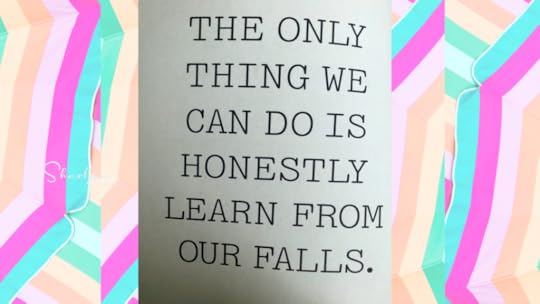
Employee suspensions are never fun – for the employee or the manager. One of the hardest parts – for managers and employees – is figuring out next steps.
I was suspended for two days due to ‘insubordination’. My HR Manager is also my department manager. There was NOT a third party involved at any point, which in my opinion is a conflict of interest. If I understand our company policy correctly, a third party should have been present to eliminate any bias.
Also, the claims of insubordination were based on assumptions and feelings, instead of facts. There was no evidence that supported any of the claims that were presented to me. Unfortunately, the HR Manager has harassed me for the last five months and each incident was documented (by me). I would like to know how I should go about filing an appeal for the suspension and requesting a hearing. Thank you.
Unfortunately, we don’t have all the details here. But we’ve written before about how employees can handle being suspended and some of the decisions they will want to consider.
This is What You Should Do If You Get a Suspension
While organizations should be providing employees with information during suspensions, it’s sad to say that sometimes the employee is in shock about what’s going on and they forget to ask clarifying requests. If companies want to get to the truth, then they need to answer employee questions.
What to Do If You’re Placed on Suspension
Companies need to communicate expectations. Managers and employees need to regularly communicate about performance. HR needs to communicate policies and procedures. Follow-up communications need to happen.
How to Handle a Work Suspension
Employee suspensions are not an action that should be taken lightly. Companies need to make sure they are handling the matter properly, both from a legal perspective and from a respect standpoint.
What Happens During an Employee Investigation
Workplace investigations are one of the toughest responsibilities in HR. There’s an expectation that the matter will be handled in the strictest confidence. And when we do that, sometimes we’re criticized for not keeping people informed.
HR Failed to Investigate an Incident
Employees need to feel they can report concerns to the organization. AND that the organization will properly investigate the situation. Not only is there a liability to ignoring an employee’s complaint, but it’s also just not the right thing to do.
Employees: When Should You Lawyer Up
There are times in your employment that you may definitely need an attorney. In this article, we share four reasons you might need the services of a lawyer.
Employee suspensions are complicated situations. Many things need to be considered, including the employee figuring out their ultimate goal. I can’t answer that question. But hopefully these articles will give the employee some things to consider as they decide how they would like to move forward.
The post How to Respond to Being Placed On Suspension – Ask #HR Bartender appeared first on hr bartender.






March 2, 2021
Organizations: Take Action on Employee Engagement for Hybrid and Remote Teams
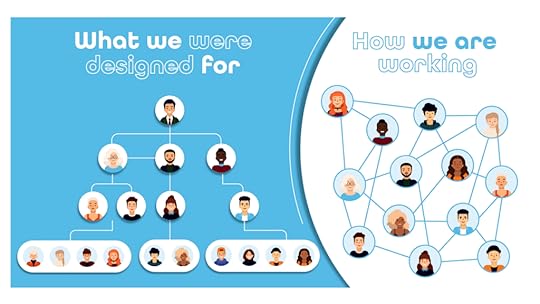
(Editor’s Note: Today’s post is brought to you by Rapid Teams , a consultancy focused on creating world class learning and team experiences. They believe that team building, and employee engagement are important pieces of the performance puzzle. Enjoy the article!)
I recently read in an eNewsletter from The New York Times that decentralized workforces (i.e. remote or hybrid workforces) can dilute organizational culture. The relationship between company culture and remote work is a huge topic of conversation right now.
Honestly, I do understand that the concept of a hybrid workforce is a big change. And a change that many organizations didn’t think they would be considering. But I don’t know that I’ve completely bought into the idea that the hybrid workforce “dilutes” culture. My thinking aligns more toward this Gartner article that says the hybrid workforce might actually increase employee engagement.
My thought is that organizations can and should change all the time. They change because business dynamics change. Many organizations are emerging from the COVID-19 pandemic saying, “We’ve learned things over the past year. Our business can work smarter. We’re going to do business differently.” That’s going to change the business and as a result, change organizational culture. So why is that type of culture change okay, but allowing employees to work remotely not okay?
Create Better Employee Engagement with Team DevelopmentMaybe the answer lies in team development. Regular readers of HR Bartender know that I draw a distinction between team building and team development. Team building is focused on defining roles, goals, and relationships. Team development is focused on mastering the skills to be a good team player. They’re both important and necessary. Building and developing good teams can help with employee engagement and organizational productivity.
This is why I want to share with you a new team action program that I recently learned about. I believe it accomplishes both the team building part and the team development part we’re looking for in terms of employee engagement. The Rapid Team’s Engagement Action Program is a behavioral leadership program disguised as a game. The Program has proven success with global hybrid teams (well before the pandemic). Here’s how it works:
One week prior to the start of the program, organizational team leaders receive one-on-one coaching and guidance, so they have the tools to support the program.Then, participants are divided into sub-teams and tasked with completing “missions” delivered directly via the interactive game app. Missions are a mix of both fun and business-related activities. These include interactive case studies, complex problem-solving challenges, establishing team goals, as well as more lighthearted challenges where employees are encouraged to participate in riddles and photo challenges.Missions run daily for 15–20-minutes across 5 days. There are over 100 missions available per team throughout the week and each one has a purpose related to team building and team development.Teams earn points on the live leaderboard as missions are accomplished.Each day, the teams will need to navigate how they approach their missions given the combined skills that exist within their team. Some missions can take 30 seconds to complete and may be low scoring, while others require the whole group to tackle a problem-solving challenge which may be worth more points. All activity is logged on a dedicated newsfeed for employees to follow and engage with.Sounds simple, right?! And it is. That’s part of the beauty of the Program. It’s very easy to explain and happens quickly while not being obvious. The “missions” for day 1 and 2 are focused on self-leadership, days 3 and 4 on leading and influencing others, and day 5 hones in on leading the business. To be successful in the game, teams have to engage in activities such as:
Deciding when they were going to huddle and agree on the exercises they want to accomplish. Keep in mind with a hybrid and remote workforce, this meant the group figures out how to connect with their co-workers all over the world with various schedules. Taking time to learn about each other, so they could make sure that missions were assigned to the right individuals. Strategizing and reaching consensus on the best combination of missions to complete, to get the maximum number of points. Trusting each other that an individual’s assigned mission would be completed. And if it wasn’t, that the team member would speak up. Planning to get their regular work done. Remember – there’s no travel involved with this activity. The mission component takes less than 30 minutes a day, for one week.A quick side note: I love that these employee engagement activities and case studies have a technology component. As human resources professionals, we talk a lot about the importance of technology. This is a terrific opportunity to build it into learning, not take it away from participants.
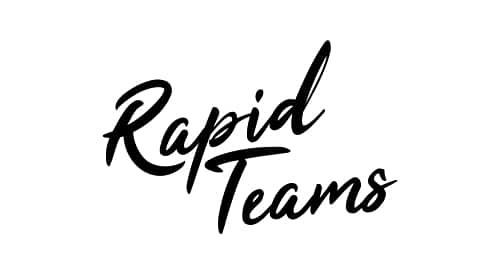
Rapid Teams Director and Principal Consultant Angus Firth, shared with me that the Engagement Action Program helps teams set priorities and goals, communicate better, and collaborate. “Recently, a team of 35 completed the program with 100% completion of all missions. This meant there were 568 collaborations within their team over the 5 days, something not achievable through a boring video conferencing meeting. The Program broke down internal silos and provided a platform for learning then ultimately, a change to a more engaged team.”
Regardless of whether we work in an office, hybrid model, or just remotely, organizations want a strong organizational culture. We want employees to collaborate well and work together as a team. After the mission activity is completed, the teams get together for a formal debrief. Personally, I think this is where the culture change piece starts to happen.
Each team has an opportunity to talk about their experience and more importantly, how they plan to use their experience moving forward. It’s those actions that employees will take with them outside of the missions that change culture. Organizations shouldn’t be afraid of that. That’s not diluting culture. It’s enhancing culture. And it can be done with global hybrid teams. In fact, it should be done with global hybrid teams.
Employee Engagement Creates and Maintains CultureBefore organizations decide that their culture can’t survive a hybrid workforce, I think it makes sense to get the workforce involved. Employees maintain the company culture. More accurately, employee engagement maintains company culture.
If you want to learn more about the Engagement Action Program, contact Rapid Teams directly and book a demo of the Engagement Action Program. It’s well worth your time. And while you’re on their website, download a copy of their team alignment tool, “the sailing boat retrospective” activity. It’s a great learning tool you will want to use.
The post Organizations: Take Action on Employee Engagement for Hybrid and Remote Teams appeared first on hr bartender.






Sharlyn J. Lauby's Blog
- Sharlyn J. Lauby's profile
- 10 followers



